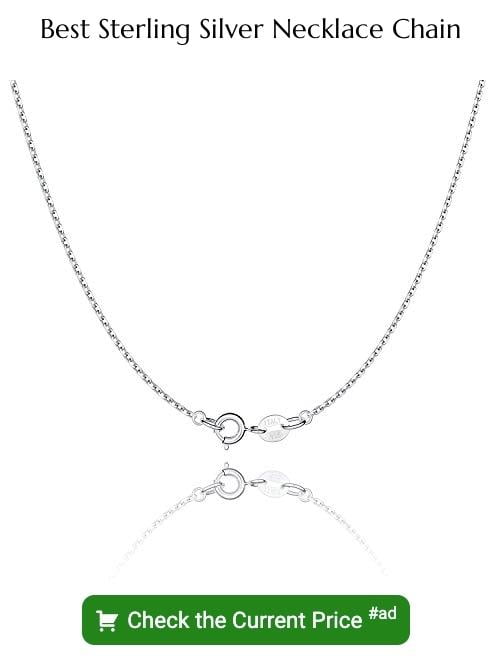Last updated on
Attaching a pendant to a chain might seem complicated, but because it’s a straightforward process with the right tools and knowledge, you can readily transform simple jewelry pieces into personalized accessories.
Delving right into the heart of the matter – attaching a pendant to a chain isn’t as complicated as it may seem. It’s an easy DIY task that can transform ordinary jewelry into a personalized piece reflecting your style.
This task needs some basic tools, a few steps to follow, and a dash of patience. From threading the jump ring through the pendant’s bail to securing it safely onto the chain, this guide promises to offer an in-depth walkthrough to effectively accomplish this task.
By following the steps, you’ll soon be wearing your customized jewelry piece with pride.
Key takeaways:
- Select appropriate materials for pendant attachment: metals, leather, silk cords.
- Cut the chain with proper measurements, considering pendant length.
- Understand the role of jump rings in attaching the pendant.
- Master the use of bail for pendant attachment.
- Utilize lobster clasps for secure pendant connection.
Selecting Appropriate Materials for Pendant Attachment
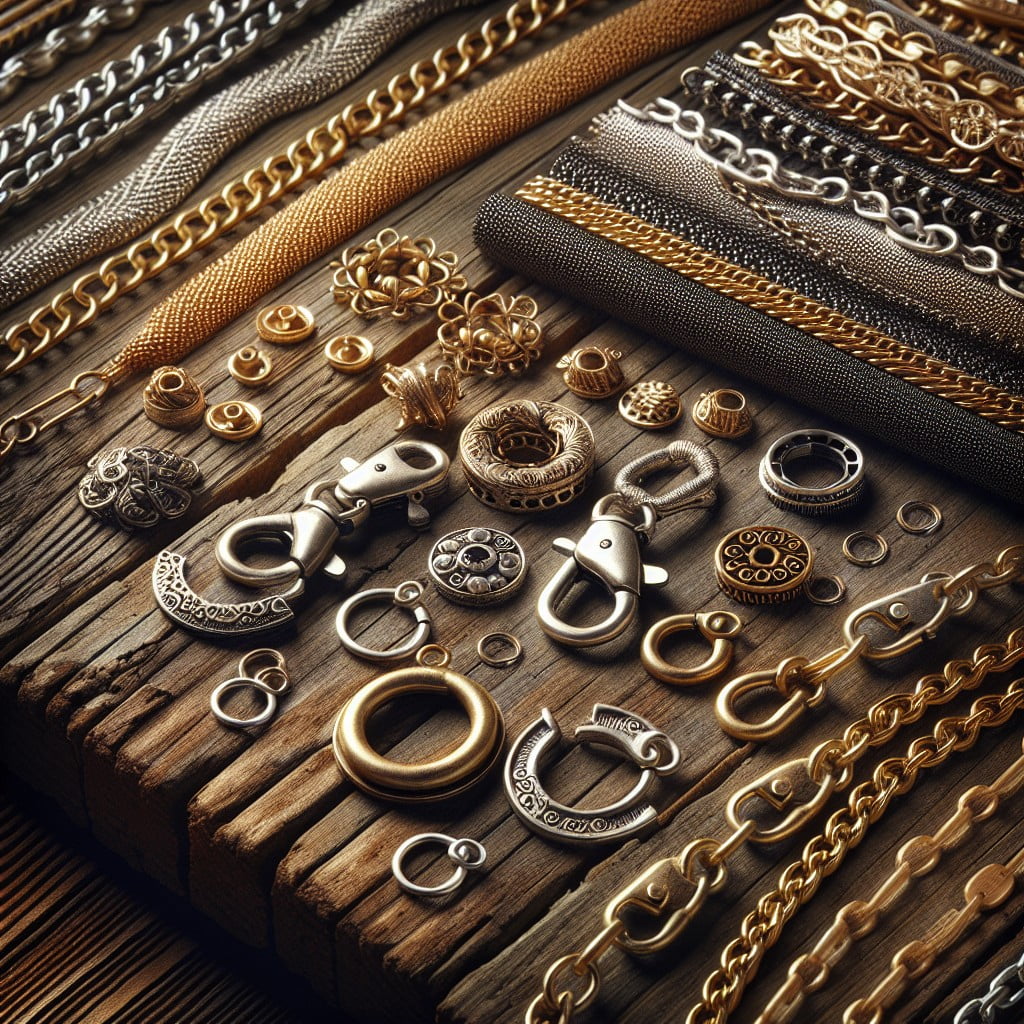
Variety is at the heart of jewelry making, providing ample choices for material selection. Metals are an undeniable favorite, with sterling silver, gold, and stainless steel, each offering unique aesthetics and durability.
Sterling silver, while slightly more prone to tarnish, wins hearts with its lustrous shine and compatibility with various pendant styles. Gold, either in its pure form or alloys like white and rose gold, delivers a premium look and resistance to corrosion. Meanwhile, stainless steel provides excellent durability and a more modern, industrial appeal.
For a non-metal option, leather and silk cords impart a rustic or delicate charm respectively, suitable for pendants of lighter weight. The material needs to balance not just the visual aspect of your pendant, but also its weight and the wearer’s comfort. Thus, while making the choice, keep in mind the pendant style, individual skin sensitivities, and the intended frequency of wear.
Cutting the Chain With Proper Measurements
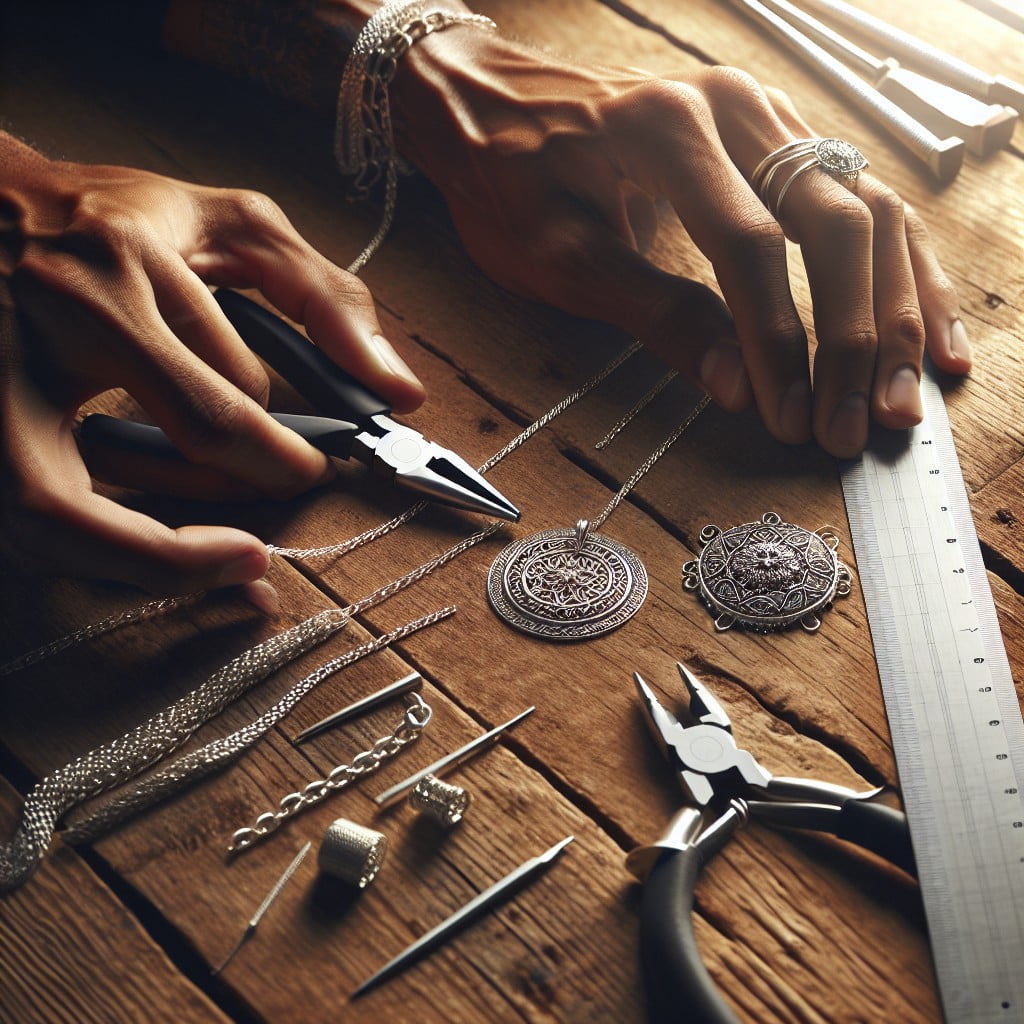
To ensure a perfect fit, accurate measuring of the chain is paramount. Begin by draping the cord around the neck to gauge the desired length. Mark the spot where you want the chain to end, accommodating for the extra length the pendant will add.
Making the cut requires careful precision. Securing the chain with a clamp will hold it steady, preventing any slipping. Using a pair of sharp, high-quality jewelry cutters, snip directly through the marked link. Keep a firm grip to avoid the chain springing free and potentially losing any links.
Always remember that it’s better to measure twice and cut once. Adjustments can be challenging after the cut has been made. Tight measures can ensure the pendant sits appealingly around the neck, enhancing your overall look while maintaining comfort.
Understanding the Role of Jump Rings
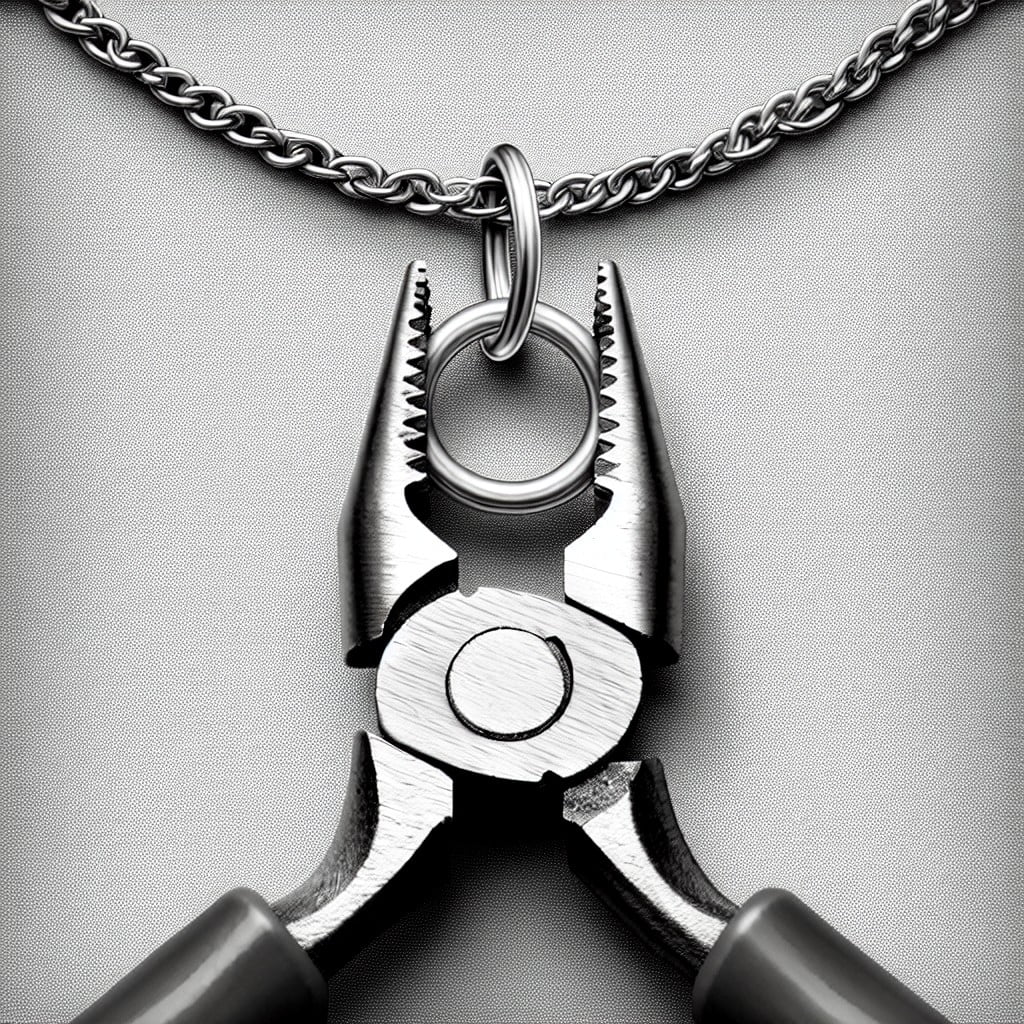
Jump rings are metal circles with a small cut that lets you pry them open and close. They act as bridges connecting pendant and chain. Being small but mighty, these components are critical in jewelry making due to their dual role in functionality and aesthetic enhancement.
To attach a pendant using a jump ring, follow these steps:
- Pry open the jump ring: Use a pair of needle-nose pliers to gently open the jump ring without completely stretching it out.
- Thread the pendant: Place your pendant’s hoop or hole into the opened jump ring.
- Attach to the chain: While the jump ring is still open, thread the chain through it.
- Close the jump ring: With your pliers, apply gentle pressure to close the jump ring tightly. Ensure the ends meet together seamlessly.
- Check the pendant attachment: The pendant should dangle freely from the chain, showing that the jump ring is fulfilling its role effectively.
Remember, patience and practice are essential when working with small jewelry components like jump rings.
Mastering the Use of Bail for Pendant Attachment
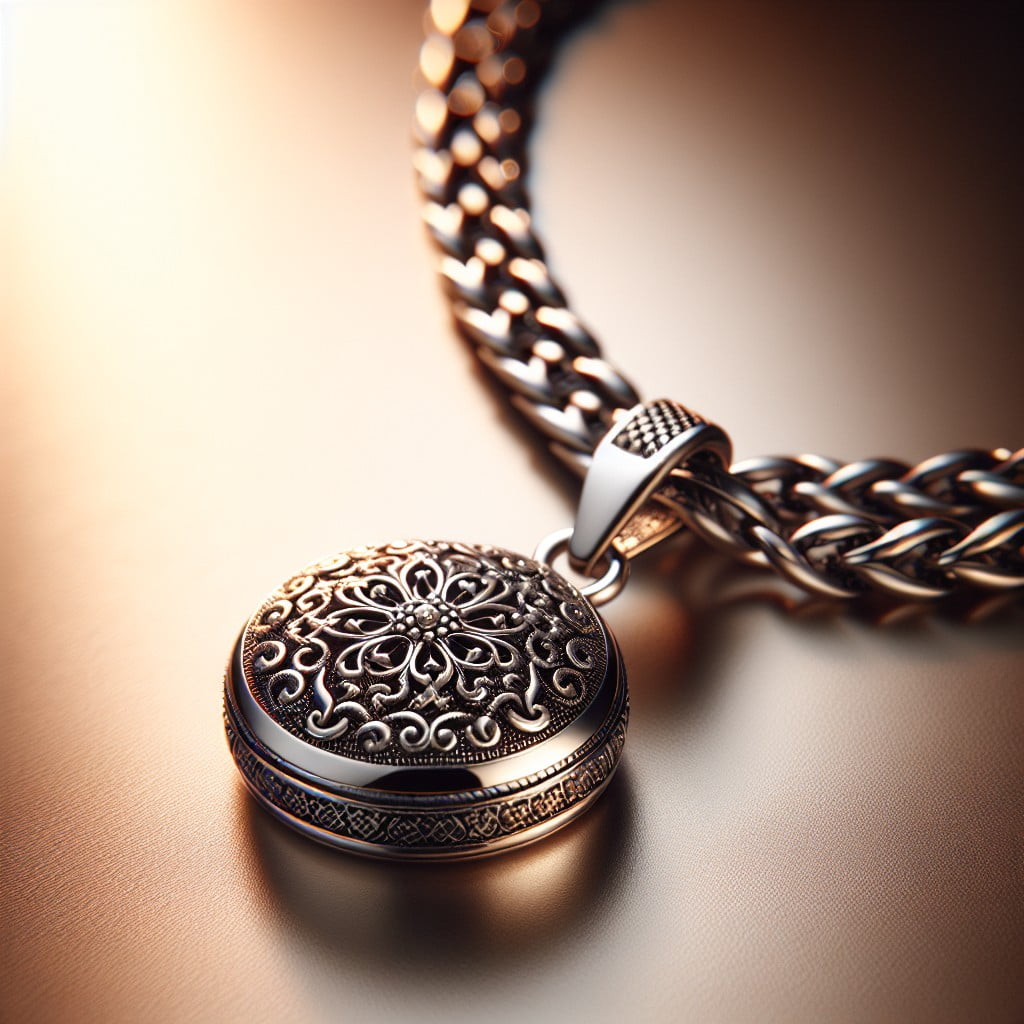
To properly utilize bail for pendant attachment, follow these simple steps:
- Identify the Type: Fixed or movable, choose a bail that complements your pendant best.
- Loop Positioning: Ensure the loop faces forward as you thread it through.
- Connect Pendant: Ensure the loop of the bail and the loop on the pendant align correctly.
- Close the Bail: Use jewelers’ pliers to gently close the bail, securing the pendant firmly.
- Thread Chain: Slide the chain through the loop on the bail. Lastly, ensure the pendant lays flat and doesn’t twist.
Remember, the beauty of a pendant lies in its movement. A well-attached bail allows it to sway, capturing attention to its details. Avoid using force while closing the bail to prevent damages.
Utilizing Lobster Clasps for Secure Pendant Connection
When you arrive at the point of using a lobster clasp, remember this component provides both security and easy use. Begin by opening the ring on the end of the clasp gently with a pair of pliers. Slide the last link of your chain onto the opened ring, then close the ring securely using the pliers.
Now, on the opposite chain end, slide on the ring. The ring must be larger so it can easily slip into the claw of the lobster clasp when worn. While attaching and securing components, ensure not to damage them by applying too much pressure. Remember, manipulation should be minor to prevent any distortions.
For an additional decorative element, consider adding a charm or small bead to the ring before attaching the chain. Not only does this enhance the visual appeal, it can also provide a grip point to facilitate the use of the clasp. Be mindful of the chain weight and clasp size to ensure they are proportionate and functional.
Mastering the lobster clasp means being able to change pendants on your chain with ease.
Exploring Alternative Pendant Attachment: Wire Wrapping
Wire wrapping has emerged as a popular and creative method to attach pendants for those seeking an alternative to traditional mechanisms. This technique can add a unique aesthetic appeal to your jewelry ensemble, particularly with gemstones or beads.
To adopt this method, you’ll need a few specific tools: jewelry wire of a suitable gauge, wire cutters, and round nose pliers. Begin by cutting a good length of wire, wrapping it around the pendant, leaving some extra at the ends. At this stage, artists often choose to create decorative swirls or loops for more intricate designs.
Next, use the round nose pliers to make a loop at the top. This is important because it allows the pendant to connect to the chain.
The effectiveness of wire wrapping hinges on choosing the correct wire gauge. A thicker wire provides greater durability but can be challenging to manipulate. In contrast, a thin wire is easier to handle but may not retain the pendant securely. Therefore, experimentation may be necessary to determine the optimal gauge for your specific pendant and design preferences.
Lastly, remember that practice makes perfect. Wire wrapping is all about refining your technique over time to create unique pendant attachments that truly personify your personality and style.
The subsequent section on pendant chain maintenance will ensure your wire-wrapped pendant stays beautiful for years to come.
Maintaining Pendant Chain: Care Tips and Tricks
To maximize the lifespan and aesthetic appeal of your pendant chain, consider the following guidelines:
1. Clean Regularly: Accumulation of skin oil and environmental dirt can dull your chain. Use warm water, gentle soap, and a soft cloth to clean.
2. Stored Properly: Keep each piece in a designated compartment in a jewelry box to prevent scratches and tangles.
3. Maintain with Polishing: Periodic polishing can help maintain shine. Using specialized polishes works best on sterling silver and gold.
4. Professional Services: For valuable or intricate pieces consider professional cleanings to sustain their luster and value.
5. Harsh Substance Avoidance: Avoid wearing your chain while swimming in chlorinated water or applying harsh chemicals such as hairspray and perfume. These substances can cause damage or gradual wear.
6. Routine Inspection: Look for any weak links or clasping issues regularly to prevent loss or damage to your pendant chain.
Remember, a well-maintained chain is just as important as a stunning pendant, setting the overall tone for your piece.
FAQ
How do you attach a pendant to a chain necklace?
To attach a pendant to a chain necklace, open a jump ring, thread it through the pendant’s loop or bail, then through a link on the necklace, and finally secure it by closing the jump ring tightly.
What holds the pendant to the chain?
The bail, also known as bale, holds the pendant to the chain.
What are the different methods for securely fastening a pendant to a chain?
Pendant-to-chain secure fastening methods encompass soldering, using a split ring, employing a closed jump ring, and utilizing lobster clasp attachments.
What materials and tools are typically required to attach a pendant to a necklace chain?
The materials and tools typically required to attach a pendant to a necklace chain include the pendant, chain, a jump ring, and a pair of jewelry pliers.
How can one adjust the location of a pendant along the length of a necklace chain?
To adjust the location of a pendant along the length of a necklace chain, slide the pendant to the desired location or use a jump ring or bail if the pendant doesn’t move freely.
Recap:
